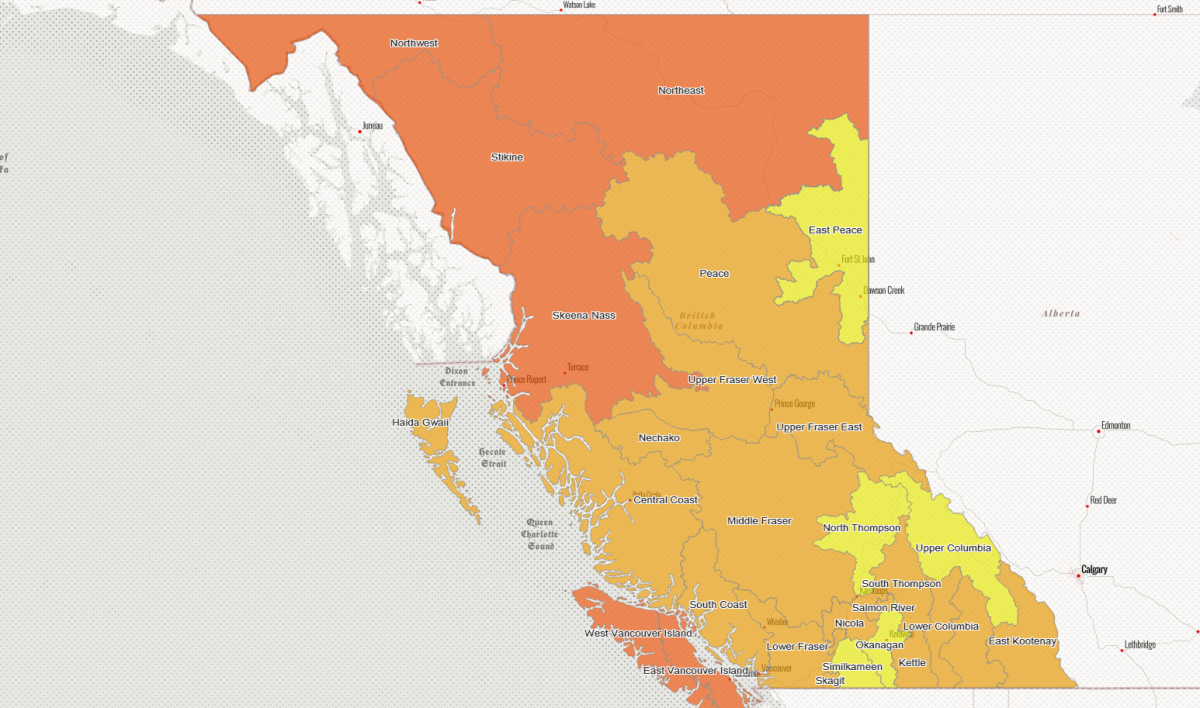B.C. finally saw a sprinkling of rain in many areas on Friday and Saturday, and it couldn’t have come at a better time.

The province has upgraded drought ratings in many many regions, with several being raised to the highest level.
The entirety of Vancouver Island is now at drought Level 4, along with the Northeast, Northwest, Stikine and Skeena-Nass regions.
Drought Level 4 refers to a water shortage severe enough that supplies won’t meet social, economic and ecosystem needs.
Ten additional regions, including the West and East Kootenays, Cariboo, Nicola and South Thompson regions, have been raised to drought Level 3.
While there is a small amount of precipitation forecast in areas of the north, the province says the rain won’t be enough to lower drought ratings.
WATCH: Evacuation order issued near Vanderhoof amid B.C. wildfires

The Ministry of Forests, Lands, Natural Resource Operations and Rural Development is asking people to cut back on water use amid the ongoing drought conditions.
READ MORE: Drought taking a toll on ‘neglected’ Calgary trees: gardening expert
But the ministry said with the raging wildfires burning across much of B.C., it recognizes that residents and organizations may need to draw water from creeks and rivers to fight the flames.
With the latest round of drought rating elevations, no region of B.C. now sits at Level 1 normal streamflow levels, and the ministry said some streams are sitting at record lows.
That’s raised concerns about some fish stocks, and officials are asking water users to ensure water intakes are screened off, and comply with Department of Fisheries and Oceans standards.
“Fish and aquatic ecosystems are at risk as water levels drop. Fish can become stranded in pools and exposed to high temperatures, which can be fatal, and may be subject to predation,” said the ministry in a media release.
The drought situation has prompted fishing closures in the Horsefly and Kettle Rivers, and officials may close additional rivers to fishing if conditions deteriorate.






Comments